







Sinharaja Rainforest Reserve
Sinharaja Forest Reserve, a UNESCO World Heritage Site, is located in southwestern Sri Lanka and represents the country’s last viable area of primary tropical rainforest. Over 60% of the trees here are endemic, many of which are considered rare. The reserve is home to diverse wildlife, including a significant number of Sri Lanka's endemic species of mammals and butterflies, along with various insects, reptiles, and rare amphibians.
Biodiversity Significance: The Sinharaja Rainforest Reserve is critical for both biodiversity and the study of Earth’s evolutionary history. Key aspects include:
Earth's Evolutionary History
- Relic of Gondwanaland: Sinharaja's flora is a remnant of the ancient supercontinent Gondwanaland, aiding in the study of plant species evolution and dispersal.
- Geological Features: The reserve contains unique geological formations that provide insights into the Earth's tectonic history, contributing to its complex ecosystems.
Sinharaja Forest Reserve Overview
The Sinharaja Forest Reserve is a hilly virgin rainforest known for its remarkable biodiversity, housing a wealth of endemic species, including trees, insects, amphibians, reptiles, birds, and mammals.
Flora
Sinharaja's vegetation can be classified as either a tropical lowland rainforest or a tropical wet evergreen forest. Key characteristics include:
- Tree Height: Dominant trees reach an average height of 35 to 40 meters, with some individuals rising up to 50 meters.
- Diversity and Regeneration: The forest features a high degree of species diversity and significant regeneration.
- Endemism: Notably, families like Dipterocarpaceae exhibit over 90% endemism. Out of 211 identified woody trees and lianas, 139 (66%) are endemic to the region. Additionally, of the 25 genera endemic to Sri Lanka, 13 are represented in Sinharaja. Exacum pallidum (බිනර මල) / Acranthera ceylanica (ගොන්දිව)
- Vegetation Density: The total density of vegetation, including trees, shrubs, herbs, and seedlings, is estimated at around 240,000 individuals per hectare, with 95% comprising ground-layer species under 1 meter in height.
- Tree Density: Trees and lianas with a girth above 30 cm at breast height number between 600 and 700 individuals per hectare. Merchantable trees with a girth greater than 150 cm range from 45 to 55 individuals per hectare.
Fauna
Faunal studies in Sinharaja reveal a high level of endemism, with over 50% among various groups:
- Mammals: Common species include the Sambhur deer, Monk deer, and Barking deer. Leopards are rarely seen but their presence is confirmed through tracks. Other notable mammals include the Purple-faced Leaf Monkey and occasional sightings of the Badger Mongoose and Golden Palm Civet. Although elephants were once common, sightings have not occurred in the past 15 years.
- Birds: Among the birds recorded, 72% are resident non-endemic and 13% are migrants. Sinharaja is renowned for its mixed-species foraging bird flocks, with studies observing up to 100 flocks containing 48 species, including 12 endemics. Rare endemic birds include the Red-faced Malkoha, Sri Lanka Blue Magpie, Ashy-headed Barbbler, White-headed Starling, and the rare Green-billed Coucal.
- Reptiles: The Agamids are the most represented reptiles, with the Green Garden Lizard being the most common. The rare Calotes liolepis is also found here. The only tortoise recorded is the Hard-shelled Terrapin, while the spotted skink is a common skink species. Common snakes include the Green Pit Viper and Hump-nosed Viper, both endemic to Sri Lanka.
- Amphibians: Sinharaja hosts nine endemic amphibian species, including the endemic Torrent toad and the common house toad. The Wrinkled frog and Sri Lankan Reed frog are commonly found in streams and marshes. The rare Ramanella palmata is the only recorded microhylid, while the yellow-banded Caecilian is the sole apodan species noted.
- Endemism: Purple-faced langur (කළු වඳුරා) / Sri Lanka Blue Magpie (කැහිබෙල්ලා) / Yellow-fronted barbet (මූකලන් කොට්ටෝරුවා හෙවත් කඳුකර කොට්ටෝරුවා) / Sri Lanka hanging parrot (ගිරාමලිත්තා හෙවත් පොල් ගිරවා) / Yellow-eared bulbul (කහ කොණ්ඩය) / Orange-billed babbler (රතු දෙමලිච්ච) / Green-billed coucal (ඇටි කුකුළා) / Cnemaspis godagedarai (ගොඩගෙදර හුනා)
Birdwatching Highlights
Sinharaja is renowned for its mixed-species bird flocks. Studies indicate that these flocks average around 42 individual birds, making them some of the largest mixed-species bird flocks in the world. Birdwatchers can expect to see nearly 18 of Sri Lanka's 27 endemic bird species during their visit, with the actual number often exceeding expectations.
Forest has several key entrances for visitors. The main entrances include;
Kudawa Entrance:
Good for birds, reptile and flora trekking
Located in the northwestern part of the reserve, this entrance offers trails that are less frequented, making it a good choice for those seeking a quieter experience in nature. The Kudawa Entrance is accessible from nearby town of Waddagala. The forest is a biodiversity hotspot, featuring a mix of tall trees, ferns, and unique plant species. Many trees here are over a century old, creating a stunning canopy.
Morningside Entrance:
Good for great views and flora trekking
This entrance is renowned for its breathtaking views and forms part of a more rugged trail. Unlike other access points, there are no official treks that begin here, adding to its sense of seclusion. This remoteness not only enhances the experience but also provides access to a variety of nearby sites. The majestic Gongala Mountain (ගොන්ගල කන්ද) Peak rises within the embrace of the rainforest, while the historic Waulpana Limestone Cave (හුණුගල් ගුහාව), the elegant Maduwanwela Manor House (Walawwa), and the serene Sinharaja Prantha Buddhist Aranya Senasanaya are all within easy reach of this enchanting Morningside entrance.
Kurulugala Entrance:
Good for waterfalls, bird, butterfly, reptile & flora trekking
The Kurulugala Entrance is located in the northeastern part of the reserve. It is accessible from Pathana, the nearby town. It a convenient starting point for exploring the rainforest. Birds lovers and butterfly lovers have great chances in seen them from Kurulugala entrance.
Pitadeniya Entrance:
Good for waterfalls, bird, butterfly, reptile & flora trekking
This is one of the most popular entry points, providing access to several trails and a range of biodiversity. It’s a good spot for birdwatching and experiencing the forest’s rich flora and fauna. The entrance is located near the village of Pitangala, which is a short drive from the town of Deniyaya.
Wathugala Entrance:
Good for waterfalls, bird, butterfly, reptile & flora trekking
The Wathugala entrance to the Sinharaja Rainforest is located in very close proximity to the Lankagama entrance.
Lankagama Entrance:
Good for waterfalls, reptile & flora trekking
The Lankagama entrance is located in the southern part of the reserve, near the town of Deniyaya and Neluwa. This entrance gives access to some of the forest’s most beautiful and pristine areas. It’s ideal for trekking and exploring diverse ecosystems. It is accessible by road, making it a convenient entry point for visitors traveling from nearby towns.
Waterfall Accessible
Pathana Oya Ella (පතන ඔය ඇල්ල)
Kakuna Ella (කැකුණ ඇල්ල)
Brahmin Ella (බ්රාහ්මණ ඇල්ල)
Uran Watunu Ella (ඌරන් වැටුණු ඇල්ල)
Gal Oruwa Ella (ගල්දොරුව / ගල් ඔරුව ඇල්ල) - 30 fts
Thattu Ella (තට්ටු ඇල්ල)
Lankagama Duwili Ella (ලංකාගම දූවිලි ඇල්ල) - 40 fts
Malmora Ella (මල්මොර ඇල්ල)
When planning a visit, consider hiring a local guide to enhance your experience and ensure safety, as the forest can be dense and challenging to navigate. Each entrance provides a unique experience, so you might choose based on your interests, such as birdwatching, hiking, or photography.
On Google Map, you could clearly see the route to destination, local excursions and tourist interests. To have a clear view click " ![]() " and then un-click "
" and then un-click " ![]() " irrelevant layers. We constantly update our site with all those interesting facts.
" irrelevant layers. We constantly update our site with all those interesting facts.
Sinharaja Rainforest Trekkings & Hikings
Best season : January - April & July - October
Available : Daily
Arranging time needed : 1 day
Hottest month : February & March
Starting point : Hambantota, Tangalle, Mirissa, Weligama and Galle areas
Starting time : 10 AM
Trekking starting hours : 3.00 PM / 6.30 PM / 6.00 AM / 10.00 AM /
Trekking options - Birding (3 hrs and 3 kms) / Nature (3 hrs and 3 kms) / Arboretum (3 hrs and 4 kms) / Waterfall (2.5 hrs and 2 kms) / Night trail (1 hrs and 1.5 kms)
Total Kms driven : 240 Approx
Accommodation : Rainforest Ecolodge Or Contact us to find different accommodation near other entrances
Room allocation : 1 pax (single) / 2 pax (double) / 3 pax (1 double + 1 single) / 4 pax (2 double) / 5 pax (2 double + 1 single) / 6 pax (3 double)
Restrictions : Do not leave plastics behind / Please do not feed wild animals.
Price includes : Half board basis luxury cabin at Rainforest Ecolodge / Pick up and drop off / Pro wildlife expert / First aid kit / Foot therapy in a natural water flow / Umbrellas / Leech socks / All Gov taxes
Child price : Aged 6 - 12 is considered a child / Aged 0 - 6 is free of charge.
Feedback us : Our drivers and service providers are advised not to promote any other activities or nudge you for shopping. Please leave your feedback on Google.
Optional : A well-spoken local animal expert / historian could be arranged with an additional fee.
You may bring : Water / Light jacket / Hat and sun glass / Sun cream / Binocular / Camera
We love holiday planning!
Recent reviews
-
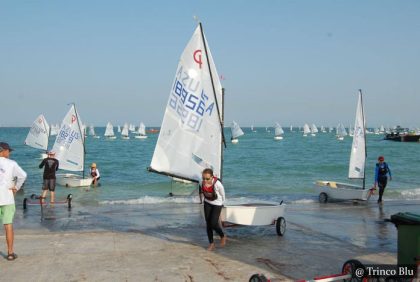 Sailing Course in Sri Lanka
Rated 4 out of 5by Michiel le Roux
Sailing Course in Sri Lanka
Rated 4 out of 5by Michiel le Roux -
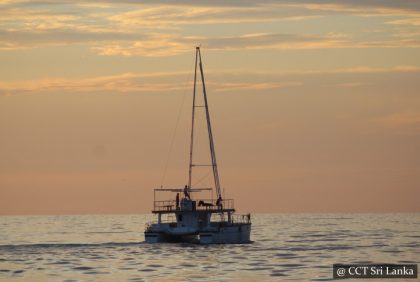 Colombo Port City Charter Sailing - 3 or 5 hrs - For Sri Lankans
Rated 5 out of 5by Ravichandran thanus
Colombo Port City Charter Sailing - 3 or 5 hrs - For Sri Lankans
Rated 5 out of 5by Ravichandran thanus -
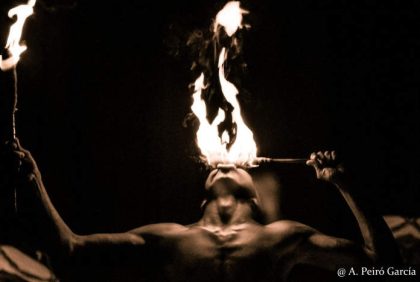 Reserve Your Seat Kandy Esala Perahera
Rated 5 out of 5by Julien Privey
Reserve Your Seat Kandy Esala Perahera
Rated 5 out of 5by Julien Privey -
 Reserve Your Seat Kandy Esala Perahera
Rated 5 out of 5by Nanfa
Reserve Your Seat Kandy Esala Perahera
Rated 5 out of 5by Nanfa -
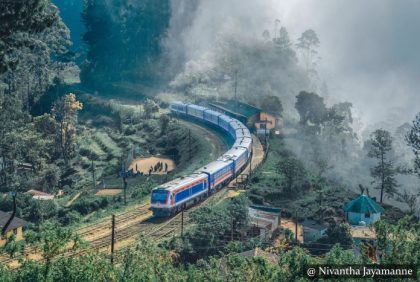 Book Train Tickets Online in Sri Lanka
Rated 5 out of 5by Vedanth Sameer Rao
Book Train Tickets Online in Sri Lanka
Rated 5 out of 5by Vedanth Sameer Rao -
 Whale Watching in Sri Lanka - Shared Luxury Yacht
Rated 5 out of 5by Julie
Whale Watching in Sri Lanka - Shared Luxury Yacht
Rated 5 out of 5by Julie -
 Colombo Port City Charter Sailing - 3 or 5 hrs - For Foreign Guests
Rated 5 out of 5by Sathsarani
Colombo Port City Charter Sailing - 3 or 5 hrs - For Foreign Guests
Rated 5 out of 5by Sathsarani -
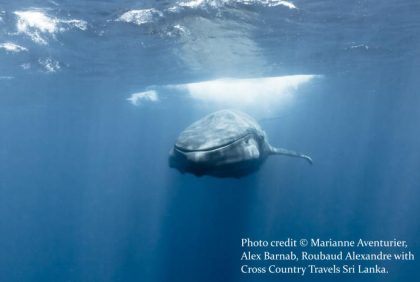 Snorkeling With Whales
Rated 5 out of 5by Arne
Snorkeling With Whales
Rated 5 out of 5by Arne -
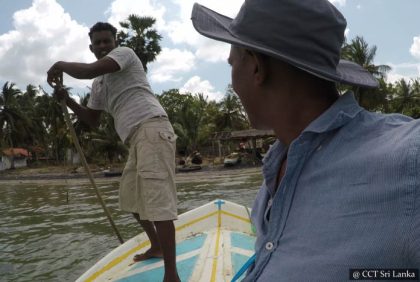 Speedy 10-Minute Boat Ride - Wilpattu to Kalpitiya
Rated 5 out of 5by Ada
Speedy 10-Minute Boat Ride - Wilpattu to Kalpitiya
Rated 5 out of 5by Ada -
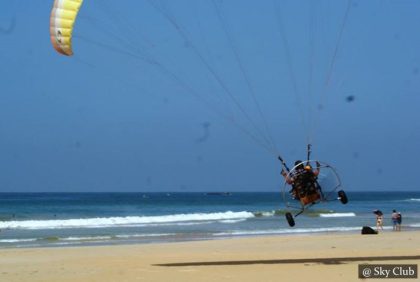 Paramotoring in Sri Lanka - Bentota
Rated 5 out of 5by Kash
Paramotoring in Sri Lanka - Bentota
Rated 5 out of 5by Kash -
 Reserve Your Vehicle With a Driver
Rated 5 out of 5by Steve
Reserve Your Vehicle With a Driver
Rated 5 out of 5by Steve -
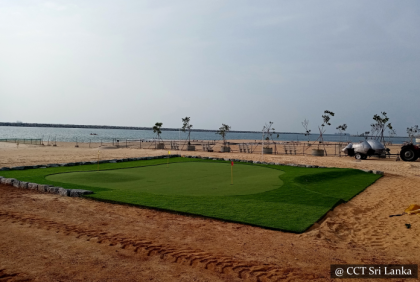 Colombo Port City - Golf Drive Range
Rated 5 out of 5by Chandula Wanasinghe
Colombo Port City - Golf Drive Range
Rated 5 out of 5by Chandula Wanasinghe

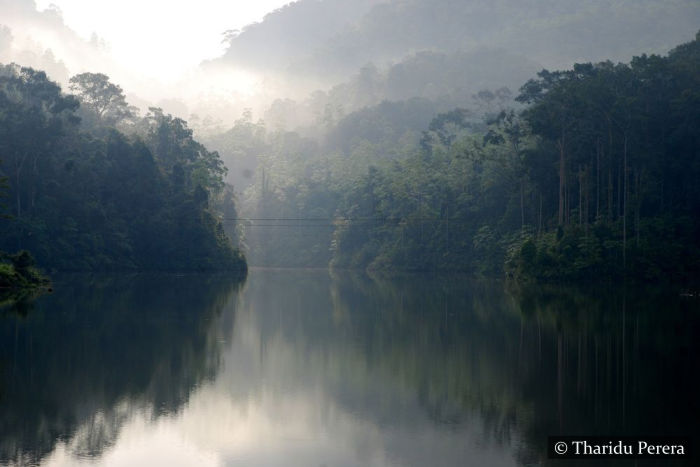
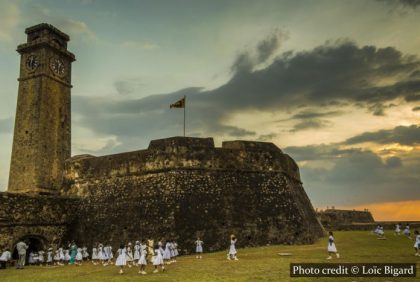
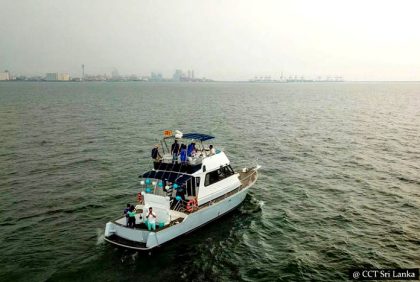
Reviews
There are no reviews yet.